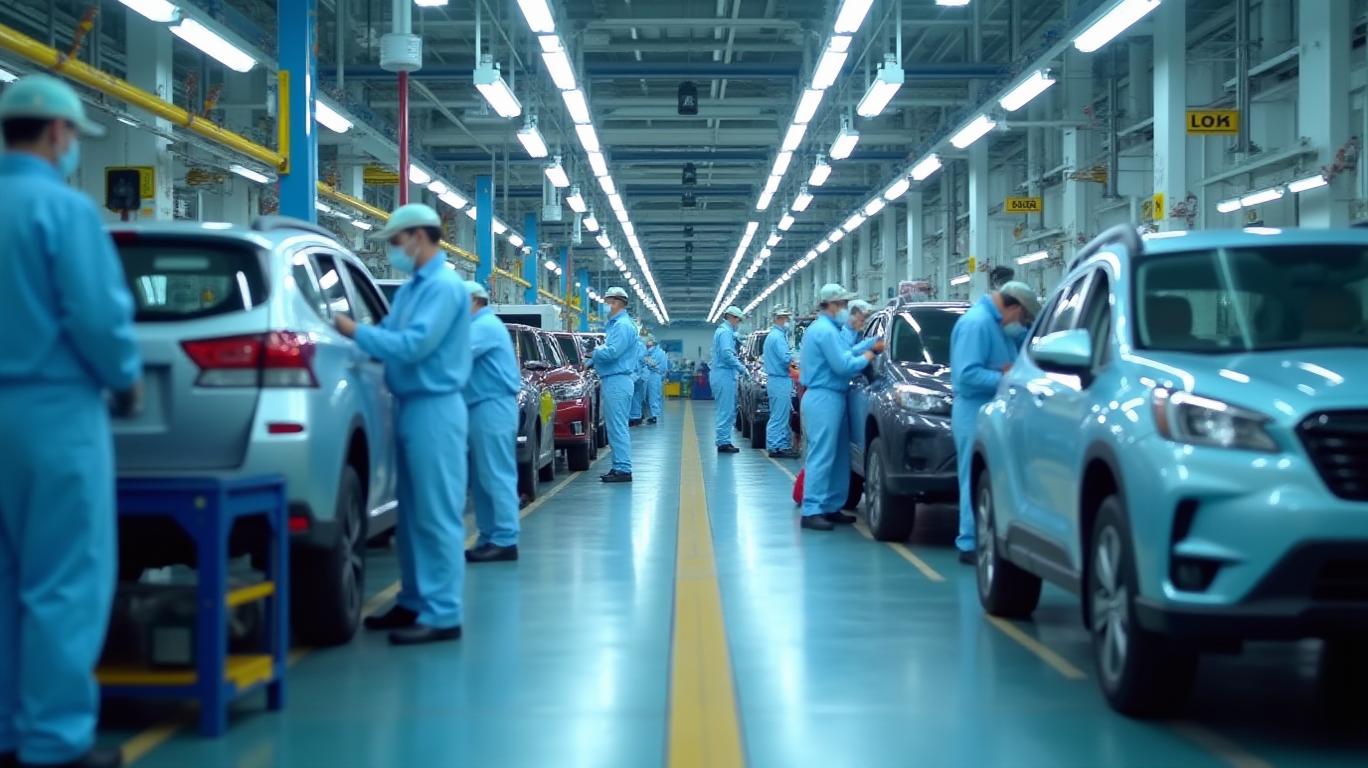Automaker Tariff Mitigation Strategies: Identifying Resilient Stocks Amid U.S. Trade Uncertainty
The U.S. auto industry is in the throes of a trade war. President Trump’s 2025 tariffs—slapping a 25% duty on non-USMCA-compliant vehicles and parts—have turned supply chains into battlegrounds. For investors, this isn’t just about picking winners and losers; it’s about spotting automakers with steel nerves in the face of regulatory chaos.
The key to thriving isn’t just U.S. factories—it’s localized supply chains, pricing discipline, and USMCA compliance. Let’s dissect which stocks to buy, which to avoid, and why Subaru’s $2.5 billion tariff exposure is a warning siren.
The Resilient: Automakers with Built-in Tariff Shields
1. Ford (F): U.S. Localization Leader
Ford’s strategy is a masterclass in tariff-proofing. With only 21% of its U.S. sales relying on imports—the lowest among major automakers—it’s insulated from the worst of the tariffs. The company’s F-Series pickup trucks, America’s top-selling vehicle, are produced in Michigan and Texas with parts sourced from 24 countries—but
is aggressively shifting non-core suppliers to North America to meet USMCA’s 75% regional content rule.
Why buy now? Ford’s excess U.S. production capacity (e.g., $2 billion invested in a new Ohio EV plant) gives it pricing power. Analysts at JPMorgan see a 15% upside as tariffs force competitors to raise prices.
2. Toyota (TM): Regional Sourcing Mastery
Toyota’s Mexico-first strategy has kept it afloat. While 51% of its U.S. imports are non-compliant, its North American plants produce engines and transmissions that qualify for tariff exemptions. The Camry and Tundra are nearly 100% USMCA-compliant, and Toyota’s $1.28 billion Texas EV plant is designed to slash reliance on Japan-sourced parts.
The kicker? Toyota’s Canadian and Mexican plants operate at 90% efficiency, avoiding the stop-start chaos hitting Stellantis.
3. Stellantis (STLA): Short-Term Pain, Long-Term Gain
Stellantis’ temporary production halts in Canada and Mexico (900 U.S. workers laid off) made headlines, but the company is playing the long game. By shifting Mexican parts to U.S. suppliers and lobbying for clarity on USMCA rules, it’s positioning itself to dominate once tariff volatility subsides. Its Jeep and Ram brands—critical to U.S. sales—are already 80% compliant.
The bet here? Stellantis’ stock is down 12% YTD but could rebound 20%+ if it wins USMCA exemptions for its Windsor, Canada plant.
The Vulnerable: Automakers with Tariff Exposure
1. Honda (HMC) & Mazda (MZDAY): Trapped in Global Supply Chains
Honda’s CR-V and Mazda’s CX-5—their bread-and-butter models—are Japanese-made, subjecting them to the full 25% tariff. With 26% of Honda’s U.S. sales and 40% of Mazda’s relying on imports, their margins are under siege.
The math? A $30,000 CR-V now costs $37,500. Analysts predict a 15% drop in demand for these brands as buyers flee to Ford or Toyota.
2. Subaru (Subaru’s Stock: Not listed on U.S. markets, but exposure is $2.5B)
Subaru’s $2.5 billion tariff exposure is a cautionary tale. 71% of its global sales come from the U.S., yet only 24% of its models (e.g., the Ascent) are U.S.-built. The WRX, Forester, and Solterra—its bestsellers—are all Japan-made.

The problem? Subaru’s U.S. dealers are slashing prices on pre-tariff inventory, but long-term, its stock (if listed) would crater as tariffs eat into profits. Avoid at all costs.
Investment Playbook: 3 Rules for Winners
Buy U.S. Localization:
Focus on Ford, Toyota, and Stellantis. Their factories and supply chains are the last line of defense against tariffs.Avoid Tariff-Doomed Stocks:
Honda, Mazda, and Subaru (indirectly via ETFs) are sitting ducks. Their global supply chains are liabilities, not assets.Track USMCA Compliance:
Automakers meeting the 75% regional content rule will win. Use to stay ahead.
Final Verdict: Tariffs Are Here to Stay. Adapt or Die.
The U.S. auto industry is undergoing a geographic reshuffle. Companies like Ford and Toyota are buying factories and suppliers to lock in compliance. Others, clinging to old supply chains, will bleed cash.
For investors, this isn’t about betting on electric vehicles—it’s about backing automakers with American steel in their bones. Ford and Toyota are the plays. The rest? Run.
Act now—before the next tariff shock hits.

Comments
No comments yet